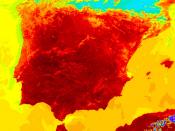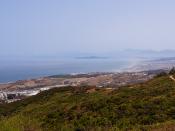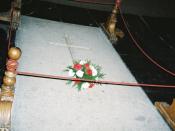Spain and Portugal have always shared a similar history, especially during the 19th century.
Soon after the First World War, both Spain and Portugal had a violent and long revolution followed by a right-wing dictatorship.
Many are the similarities between the two dictators and their policy.
A strong institution in both countries was the army.
In Spain, the army based in Morocco gave birth to the coup in 1936 and as the civil was continued, it was the army that fought against the left-wing Republic. General Franco, the so-called 'Caudillo', was at first only a member of the army, and then he became its leader.
After the successful victory of the revolution, the army maintained a privileged position. General Franco based all his power on the locality of his army; as in any military dictatorship, the army had the power to kill or free someone.
In a theorical class ( ), the army was just below the dictator.
During this era, a new form of army and secret police was created; this was called ( ).
In Portugal, the coup was organised by right-wing army officers.
As in Spain, the leader power was concentrate and supported by the army.
Instead of policemen, it was the army that controlled the people's lives.
The situation here was very similar to Spain's.
That is why the General Gomez de Costa, the leader, supported the Spanish coup hoping for a right-wing victory.
In those years before Franco's victory, Portugal used to sent volunteers, food, clothing and weapons to its neighbours.
The church had a major role during both dictatorships.
Spain had always been extremely catholic; during the second Republic (1933-6) the church was put aside, thus it had little power.
This is the main reason why the Catholic Church welcomed the revolutionary coup.


